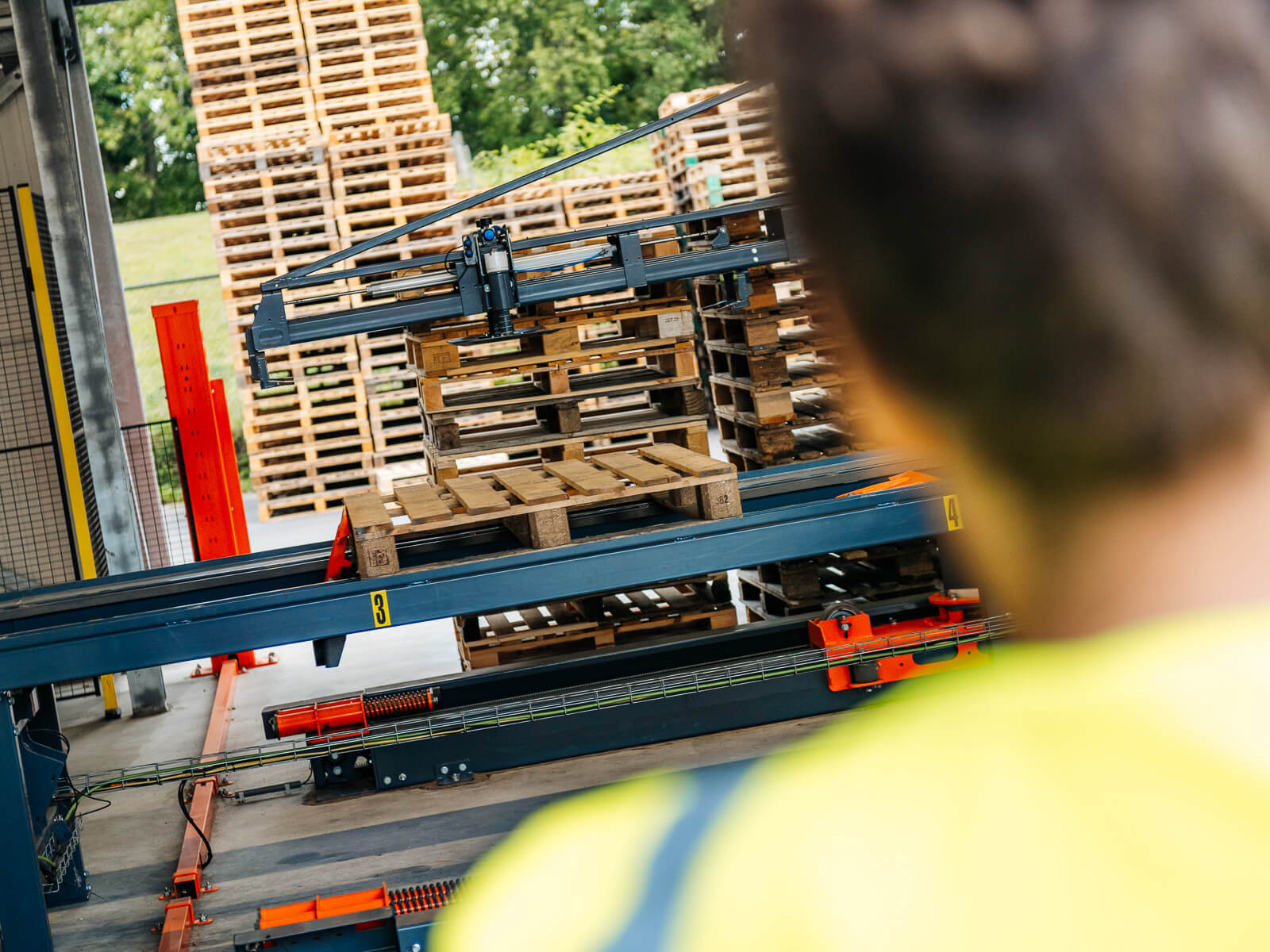CO2-NEUTRAL, 100% CIRCULAR
The real strength of wooden pallets and packaging is that they can be reused, repaired and recycled many times over. This ultimately makes them CO2-neutral as well as 100% circular.
1. FOREST
Trees give us oxygen and remove CO2 from the air. Europe’s forests store at least 9,552 million CO2 annually. Some 115 million tonnes of CO2 are added every year. This increase alone is equivalent to the emissions of 15 million households.
Wood is the most sustainable and eternally renewable resource in the world. If we manage our production forests responsibly and sustainably, forests renew themselves and the wood never runs out. Good to know: European forests have grown by more than five times the area of Belgium over the last 20 years!

2. SUSTAINABLE WOOD
Foresco only buys timber from sawmills that source their timber from sustainably-managed production forests. We are therefore working to achieve a sustainable wood chain. We are Chain of Custody certified and have the PEFC- and FSClabel.
In sustainably-managed forests, the biodiversity, productivity, regeneration capacity, vitality and potential of forests are maintained now and in the future. With the aim that forests continue to fulfil their ecological, economic and social functions. Thus, no damage should be caused to ecosystems.
Sustainable forest management is based on social, environmental and economic interests. These are the three interrelated pillars of sustainability. They cannot exist without each other; if one pillar is missing, it comes at the expense of forest protection.
3. PRODUCTION
Our wooden pallets, cases, crates and export packaging are produced at Foresco sites in the most sustainable way possible. Our EPAL pallets last as long as six to eight years.

4. REVIEW
At Foresco, we work with our customers to give wooden pallets multiple lives. We buy used pallets, sort them, and carry out any necessary repairs.
5. WOOD RECYCLING
Wood has many applications and recycling uses. We make maximum use of these. In addition, unusable or non-repairable parts are recycled and made into new products, such as chipboard, pressed bobbins, litter for the agricultural sector or ground covers for gardens. All the while, wood retains the stored CO₂. The wood packaging industry achieved its target recycling rate of 77% in 2018.

6. ENERGY RECOVERY
The final step in the circular process is energy generation from wood that is no longer usable for anything. Only this energy recovery releases the stored CO₂. As a result, we have a circular and carbon-neutral cycle. One cubic metre of wood saves 0.8 tonnes of CO2 compared to alternative materials, such as plastic. There is no commodity with the same qualifications!
Curious about what we can do for you? Contact us.